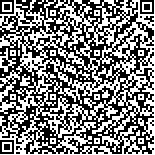| 孙荣寅,李舜航,韩翔翔,等.1990—2019年中国口腔癌发病率年龄-时期-队列分析及2020—2049年趋势预测[J].中国肿瘤,2023,32(10):753-759. |
| 1990—2019年中国口腔癌发病率年龄-时期-队列分析及2020—2049年趋势预测 |
| Age-Period-Cohort Analysis from 1990 to 2019 and Prediction of Oral Cancer Incidence from 2020 to 2049 in China |
| 投稿时间:2023-01-19 |
| DOI:10.11735/j.issn.1004-0242.2023.10.A006 |
|
 |
| 中文关键词: 口腔癌 疾病负担 发病率 年龄-时期-队列分析 预测 中国 |
| 英文关键词:oral cancer disease burden incidence age-period-cohort analysis prediction China |
| 基金项目:山东省优质专业学位教学案例库项目(SDYAL2022149);山东省中医药科技项目(M-2022235);潍坊市科技发展计划(医学类)项目(2021YX047);潍坊医学院大学生创新创业训练计划(X2022242);潍坊医学院优质专业学位教学案例库项目(22YZSALK08);潍坊医学院公派国内进修访学项目(20237-10) |
|
| 摘要点击次数: 1160 |
| 全文下载次数: 593 |
| 中文摘要: |
| 摘 要:[目的] 分析中国口腔癌发病率的变化趋势及其年龄-时期-队列效应,并预测2020—2049年的口腔癌发病率,为制定口腔癌防控策略提供依据。[方法] 从全球疾病负担(GBD)数据库提取1990―2019年中国口腔癌发病率等数据,利用年龄-时期-队列模型评估中国口腔癌发病率的变化趋势,并在贝叶斯框架下对2020―2049年的口腔癌发病率进行预测。[结果]2019年中国口腔癌粗发病率及年龄标化发病率均高于1990年,研究期间各年份的男性口腔癌发病率均高于女性。年龄-时期-队列模型显示,研究期间内,中国男、女性口腔癌发病率的净漂移值分别为3.67%和0.21%;中国男、女性纵向年龄曲线的峰值分别出现在85~89岁和90~94岁年龄组;以2000―2004年时期组为对照,2005―2019年时期组男性的时期效应率比(RR)值均大于1且高于女性;中国总体口腔癌发病率的队列效应RR值呈现上升趋势。经预测,中国女性口腔癌年龄标化发病率在2020—2049年期间虽低于男性但呈现上升趋势。[结论] 1990―2019年年龄-时期-队列效应对中国口腔癌发病率的变化趋势影响显著,需采取积极措施以控制未来持续升高的口腔癌发病率。 |
| 英文摘要: |
| Abstract:[Purpose] To analyze the age-period-cohort effect of oral cancer incidence from 1990 to 2019 in China, and to predict the trend from 2020 to 2049. [Methods] The data of oral cancer in China from 1990 to 2019 were extracted from the Global Burden of Disease(GBD) database. The age-period-cohort model was used to assess the trends of oral cancer incidence in China, and the oral cancer incidence from 2020 to 2049 was predicted with the Bayesian framework.[Results] The crude incidence rate and age-standardized incidence rate(ASIR) of oral cancer in 2019 were higher than those in 1990; and the incidence in male was higher than that in female during the study period. The age-period-cohort model showed that the net drift of the incidence rate males and females during the study period was 3.67% and 0.21%, respectively. The highest value of the longitudinal age curve in males and females appeared in the 85~89 and 90~94 age groups, respectively. Compared with the period of 2000—2004, the rate ratio(RR) of period effect in male from 2005 to 2019 was more than 1, which was higher than that in female. The RR of cohort effect of the overall incidence showed an upward trend. Although it was predicted that the ASIR of oral cancer in female would be lower than that in male between 2020 and 2049, it would present an increasing trend.[Conclusion] Age-period-cohort effects exert a significant impact on the trend of oral cancer incidence in China from 1990 to 2019. Active measures should be taken to control the rising incidence of oral cancer in the future. |
|
在线阅读
查看全文 查看/发表评论 下载PDF阅读器 |